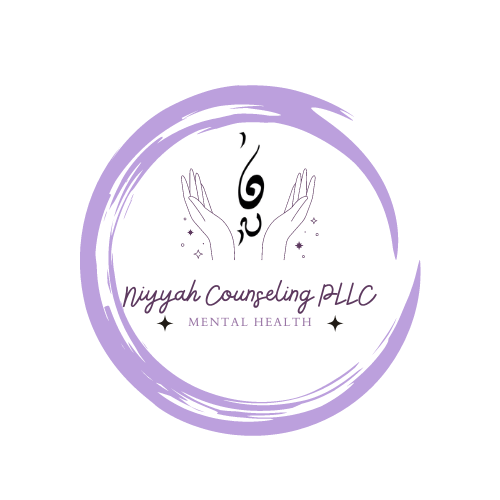Couples: How to Make Sure You’re Communicating Helpfully
Communication is the foundation of any healthy relationship. For couples, the way you communicate can either strengthen your bond or create unnecessary tension and misunderstandings. While everyone communicates differently, learning how to do so in a helpful and constructive way can make all the difference in fostering intimacy and connection.
Whether you're navigating day-to-day conversations or working through conflict, improving your communication skills can help you and your partner feel heard, understood, and valued. Here’s how you can ensure your communication strengthens your relationship rather than straining it.
Why Communication Matters in Relationships
Effective communication is about more than just exchanging words. It’s about understanding each other’s needs, emotions, and perspectives. When couples communicate well, they build trust, resolve conflicts more easily, and maintain emotional intimacy.
On the other hand, poor communication—characterized by defensiveness, avoidance, or misunderstandings—can lead to feelings of resentment, isolation, and frustration. By being intentional about how you communicate, you can create a stronger, more resilient partnership.
Tips for Communicating Helpfully
1. Practice Active Listening
Listening is a cornerstone of helpful communication. Active listening means fully focusing on your partner without interrupting, judging, or planning your response while they’re speaking.
What it looks like:
Maintain eye contact and put away distractions.
Use verbal cues like “I see” or “That makes sense.”
Reflect back what you hear, e.g., “It sounds like you’re feeling overwhelmed by work.”
By showing your partner you value their perspective, you foster mutual respect and understanding.
2. Express Yourself Clearly
While listening is essential, so is articulating your own feelings and needs in a way your partner can understand. Use “I” statements to focus on your emotions rather than assigning blame.
Example:
Instead of: “You never help around the house.”
Say: “I feel overwhelmed when I have to handle all the chores. Can we come up with a plan to share the workload?”
Clear, specific language helps your partner know what you need without feeling attacked.
3. Avoid Assumptions
It’s easy to assume you know what your partner is thinking or feeling, but these assumptions can lead to misunderstandings. If something is unclear, ask for clarification instead of jumping to conclusions.
Example:
Instead of: “You’re ignoring me because you’re upset.”
Ask: “I’ve noticed you’ve been quiet today. Is everything okay?”
4. Stay Focused on the Issue
During disagreements, it’s tempting to bring up past grievances or unrelated issues. However, this can derail the conversation and escalate conflict. Stick to the topic at hand to ensure the discussion remains productive.
Example:
If discussing household chores, avoid saying, “And last month, you forgot my birthday!”
Focused communication helps resolve the issue faster and reduces unnecessary tension.
5. Take a Break When Needed
Sometimes, emotions run high during tough conversations. If you or your partner feel overwhelmed, it’s okay to take a step back and revisit the discussion later.
How to do it:
Communicate your need for a break: “I’m feeling really frustrated right now and need a few minutes to calm down. Let’s pick this up in 20 minutes.”
Taking a break prevents conversations from spiraling into unproductive arguments.
6. Practice Empathy
Empathy means putting yourself in your partner’s shoes and trying to understand their feelings and perspective. Even if you don’t agree with their viewpoint, acknowledging their emotions can help de-escalate conflict and foster connection.
Example:
“I can see why that would upset you. Let’s figure out how we can make this better.”
7. Show Appreciation
Positive communication isn’t just about resolving conflicts; it’s also about reinforcing the good in your relationship. Regularly expressing gratitude and appreciation can strengthen your bond and make challenging conversations easier to navigate.
Example:
“Thank you for making dinner tonight—I really appreciate it.”
Small gestures of kindness go a long way in creating a positive communication dynamic.
Common Communication Pitfalls to Avoid
Even with the best intentions, certain habits can undermine helpful communication:
Interrupting: Wait until your partner finishes speaking before sharing your thoughts.
Criticizing: Focus on behaviors, not character. For example, “I felt hurt when you didn’t call” is more constructive than “You’re so inconsiderate.”
Stonewalling: Shutting down or avoiding a conversation entirely can leave issues unresolved and lead to frustration.
Defensiveness: Instead of deflecting blame, take responsibility where appropriate: “I see your point. I could have handled that better.”
When to Seek Professional Help
If communication challenges persist despite your efforts, couples counseling can provide a safe space to explore and improve your dynamics. A therapist can help you identify unhelpful patterns, develop new strategies, and foster a deeper understanding of each other.
At Niyyah Counseling PLLC, we specialize in helping couples strengthen their communication and reconnect with one another. Through tailored strategies and compassionate guidance, we can help you build a healthier, more fulfilling relationship.
Final Thoughts
Helpful communication is a skill that takes time, patience, and practice to master. By actively listening, expressing yourself clearly, and approaching conversations with empathy, you can create a foundation of trust and understanding in your relationship.
Remember, no couple communicates perfectly all the time, but small, intentional changes can lead to big improvements. If you’re ready to take your relationship to the next level, reach out to us at Niyyah Counseling PLLC. Together, we can help you build the tools for lasting connection and growth.
Contact Niyyah Counseling PLLC
Helping you align your intentions with meaningful action.
